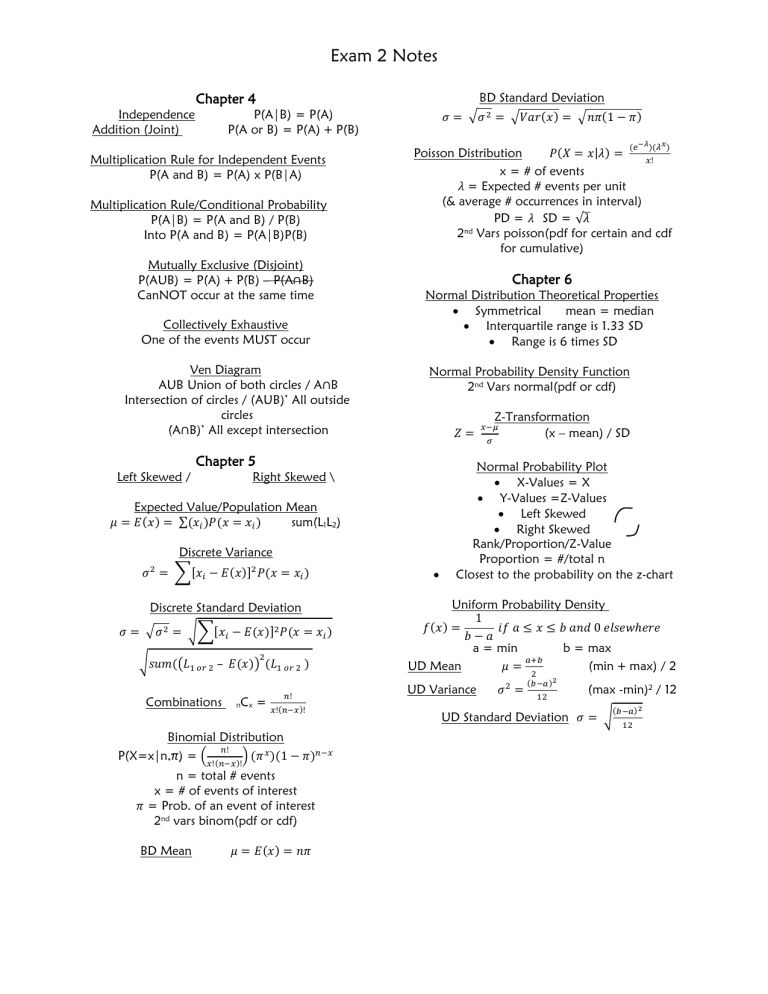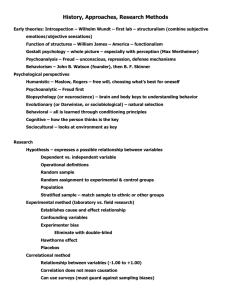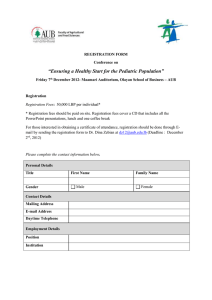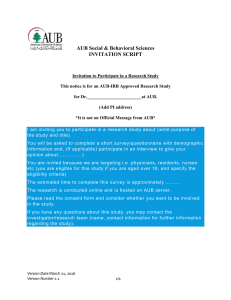
Exam 2 Notes Chapter 4 Independence Addition (Joint) BD Standard Deviation √ 𝜎 = 𝜎 2 = √𝑉𝑎𝑟(𝑥) = √𝑛𝜋(1 − 𝜋) P(A|B) = P(A) P(A or B) = P(A) + P(B) (𝑒 −𝜆 )(𝜆𝑥 ) Multiplication Rule for Independent Events P(A and B) = P(A) x P(B|A) Multiplication Rule/Conditional Probability P(A|B) = P(A and B) / P(B) Into P(A and B) = P(A|B)P(B) Mutually Exclusive (Disjoint) P(AUB) = P(A) + P(B) – P(A∩B) CanNOT occur at the same time Collectively Exhaustive One of the events MUST occur Ven Diagram AUB Union of both circles / A∩B Intersection of circles / (AUB)’ All outside circles (A∩B)’ All except intersection Left Skewed / Poisson Distribution 𝑃(𝑋 = 𝑥|𝜆) = 𝑥! x = # of events 𝜆 = Expected # events per unit (& average # occurrences in interval) PD = 𝜆 SD = √𝜆 2nd Vars poisson(pdf for certain and cdf for cumulative) Chapter 6 Normal Distribution Theoretical Properties Symmetrical mean = median Interquartile range is 1.33 SD Range is 6 times SD Normal Probability Density Function 2nd Vars normal(pdf or cdf) 𝑍= Chapter 5 Right Skewed \ Expected Value/Population Mean 𝜇 = 𝐸(𝑥) = ∑(𝑥𝑖 )𝑃(𝑥 = 𝑥𝑖 ) sum(L1L2) Discrete Variance 𝜎 2 = ∑[𝑥𝑖 − 𝐸(𝑥)]2 𝑃(𝑥 = 𝑥𝑖 ) Discrete Standard Deviation 𝜎 = √𝜎 2 = √∑[𝑥𝑖 − 𝐸(𝑥)]2 𝑃(𝑥 = 𝑥𝑖 ) 2 √𝑠𝑢𝑚((𝐿1 𝑜𝑟 2 – 𝐸(𝑥)) (𝐿1 𝑜𝑟 2 ) Combinations nCx = 𝑛! 𝑥!(𝑛−𝑥)! Binomial Distribution 𝑛! P(X=x|n,π) = ( ) (𝜋 𝑥 )(1 − 𝜋)𝑛−𝑥 𝑥!(𝑛−𝑥)! n = total # events x = # of events of interest 𝜋 = Prob. of an event of interest 2nd vars binom(pdf or cdf) BD Mean 𝜇 = 𝐸(𝑥) = 𝑛𝜋 Z-Transformation (x – mean) / SD 𝑥−𝜇 𝜎 Normal Probability Plot X-Values = X Y-Values =Z-Values Left Skewed Right Skewed Rank/Proportion/Z-Value Proportion = #/total n Closest to the probability on the z-chart Uniform Probability Density 1 𝑓(𝑥) = 𝑖𝑓 𝑎 ≤ 𝑥 ≤ 𝑏 𝑎𝑛𝑑 0 𝑒𝑙𝑠𝑒𝑤ℎ𝑒𝑟𝑒 𝑏−𝑎 a = min b = max 𝑎+𝑏 UD Mean 𝜇= (min + max) / 2 UD Variance 2 𝜎 = 2 (𝑏−𝑎)2 12 (max -min)2 / 12 (𝑏−𝑎)2 UD Standard Deviation 𝜎 = √ 12


